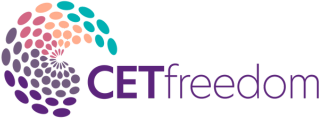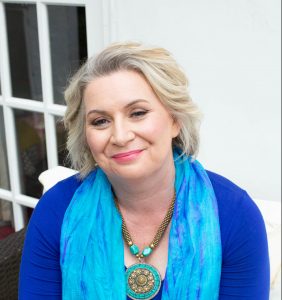Coaching has become rather a nebulous term; it encompasses so many concepts, methodologies and philosophies. It has become a rather vague concept that is something to do with bettering ourselves or improving performance. It’s sometimes indistinguishable from healing, training, mentoring, and instruction.
This model lays out the 4 modes of coaching. Knowing these modes and which mode your client is working in, you can meet them where they are and are better placed to use the right techniques to move them, yourself and your practice forward.
When coaching first moved from sports to business, leadership and life coaching, its focus was on improving performance.
The 4 modes are:
- Performance
- Parts
- Process
- Presence
1. Performance
Performance-based coaching is where coaching began. It started in sports where athletes had a coach to teach them how to improve their performance. This quickly moved to business and executive coaching, where managers and leaders sought out coaches to improve their performance. This level of coaching was largely an outside-in approach, which was based on answering the question:
What behaviours do I need to do to get the results that I want?
This level might also include the development of some skills in order to perform that behaviour better. For example, communication skills, time, management skills, setting, clear, goals, goal-stacking.
Coaching has come a long way since its early days. However, for many, this is still a main method of coaching, and it is still extremely prevalent in the coaching industry. For some, it’s considered the bedrock and baseline of coaching. Many coach trainings and certifications still focus largely on this approach. It is largely an outside-only approach. We go no deeper than behaviour and only touch on inner motivations and drivers.
2. Parts
The next level of coaching is Parts.
This level is based around separation. We start from the fundamental premise that there is me, and there is you, and we are separate. There’s me, there’s my team. There’s the chair, there’s me, sitting on the chair. Everything is separate.
We then apply this internally and we see how our inner parts relate to each other.
These might be parts, such as the roles we play in different areas of our lives. For example, we might be a manager but also a mother. We might be a coach and also an entrepreneur. Internally, there might also be different ego parts. If you’re uncomfortable with the word ego, you might call these inner parts or self-parts. For example, an inner child seeking approval, an unloved part, an inner critic, and an unhealed part, a part that seeks to win or succeed though high performance.
All these parts are separate from each other, they each have different desires, needs and frequently conflict with each other. This can create a sense of confusion, inner conflict, procrastination, and self-sabotage. You may also have traumatised parts which you unconsciously seek to protect.
3. Process
The next level of coaching is Process.
This is where we go deep into our inner work.
Here we introduce processes, techniques and technologies that fundamentally improve us as humans. We use a range of self-improvement processes to make us better people.
This is where those parts that we have identified start to become reconciled and more integrated. We heal the parts, and we heal the divisions between the parts.
This is where those parts become whole, leading to greater wholeness and integration of the individual.
This is the realm of healing, clearing limiting beliefs, releasing trauma. Healing is the predominant word and focus for this process-based level. Here we go inside and improve ourselves so that we can create and achieve more on the outside.
When we move into process and the depths of process, we become much more whole. We become more integrated. We find we are driven by a sense of purpose rather than lack.
As we move through this level, we realise that there was never anything wrong with us. This is where we begin to recognise that there is nothing missing and we are just us. It’s this that enables us to move to the next level.
4. Presence
The final level is presence.
This is where we transcend the self. The individual is whole and complete, and we now seek wholeness and unity with others.
This is where a true depth of connection and integration with everyone we know, everyone we meet, and humanity at large, becomes possible. We could even say it becomes inevitable.
True presence means there is no separation.
True presence means you have nothing to prove, and nothing to hide.
Yet you are more passionate and productive than ever before.
True Presence and Transcendence results in a sense of inner peace; not the kind of peace that comes from escaping a world that doesn’t work, but from embodying your true soul to create something wonderful.
You live from a place of joy and expansion, rather than need and lack.
This final level of coaching enables us to achieve this.
We could say that this level is what many religions attempt to do. However, it is impossible to impose presence and unity on another.
It is only possible to achieve it for ourselves from within.
And there lies the paradox. As a coach, how can you enable anyone else to achieve presence?
How can you market yourself as a presence-based coach without coming from the place of lack?
Well handling paradoxes is one of the essences of transcendence.
You recognise that everything is perfect, just as it is; just as an acorn is perfect, and an oak tree is perfect. The Acorn still seeks to grow into the oak.
A transcendence-based coach recognises that every individual is perfect and that they will still seek growth, because that is our nature.
This final stage is where we are at transcendence. A transcendent coach is one that facilitates unity, or non-duality. In all the joyful flavours that this can show up.
What’s the secret to becoming a transcendence-based coach?
Conscious emotional transformation, CET enables this easily and quickly.
- As a CET trained coach, you remove all sense of internal and external separation.
- As a CET trained coach, you are able to access a higher state of consciousness on demand and with ease.
- As a CET practitioner, you can install new strategies and behaviours so you and your client can get better results in less time.
- As a CET practitioner, you can turn emotions into your power source so they are no longer your baggage.
Dr Lisa Turner







